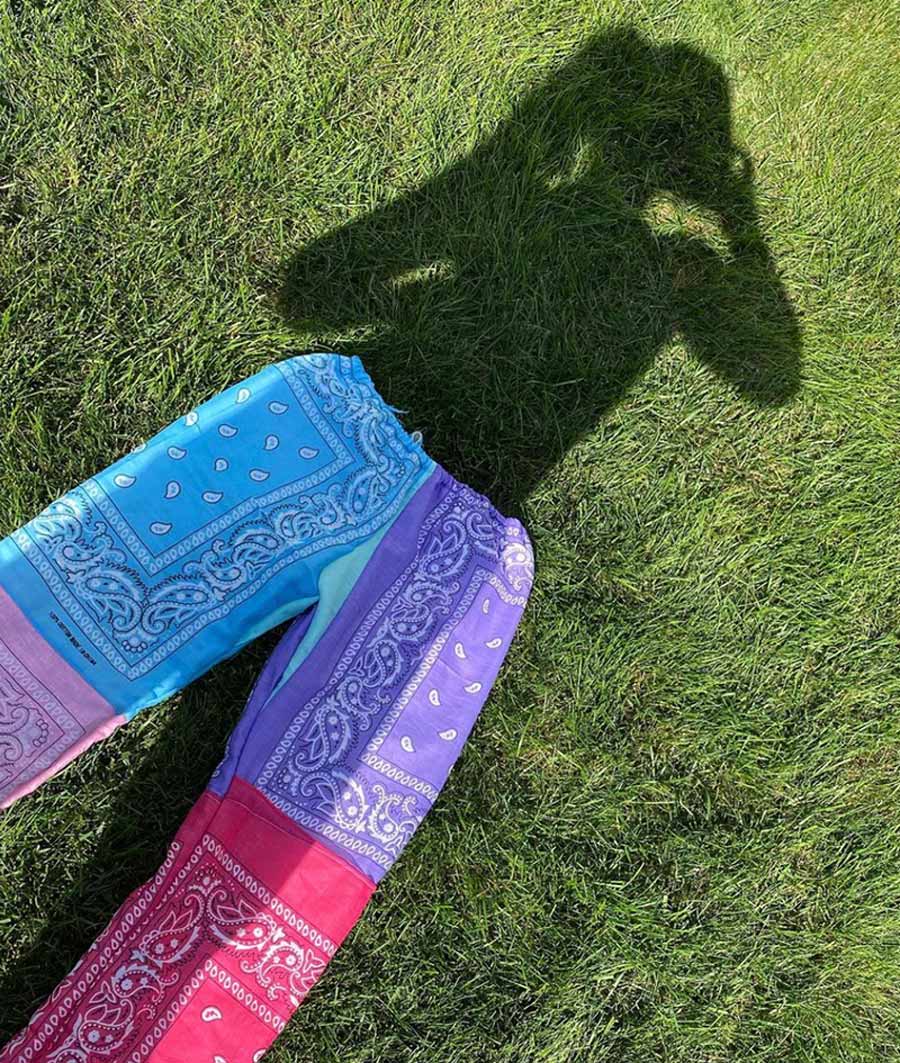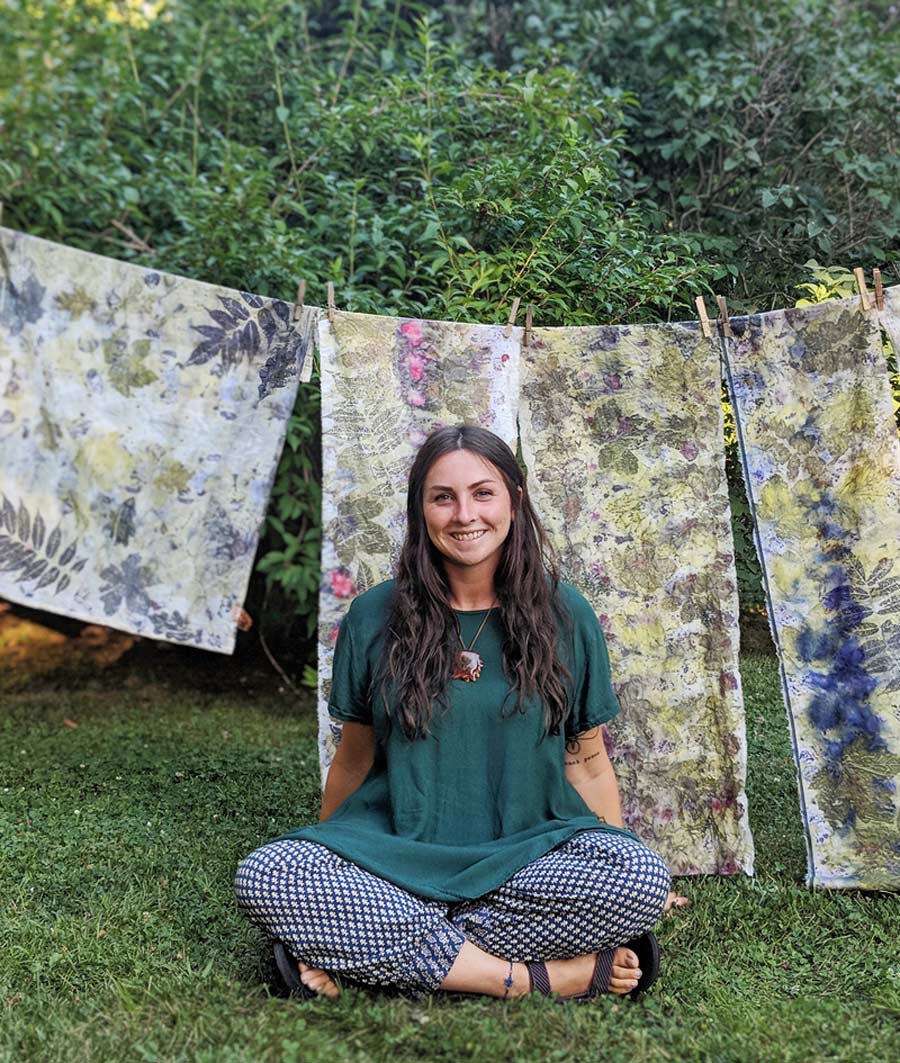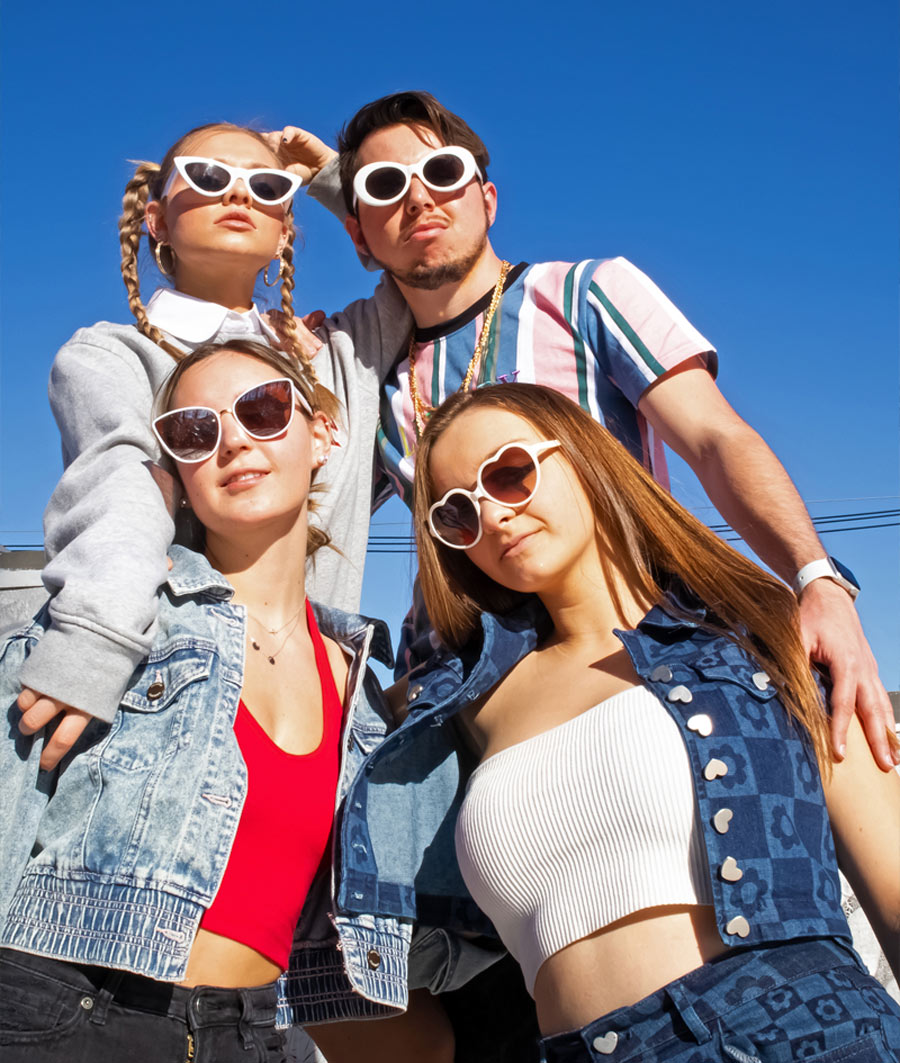


Above, right: Katama Murray ’19
Right, clockwise from top left: Kerstin Venincasa ’21, Gunnar Consol ’21, Julie Miller ’22 and Camilla Puzio ’24. Thanks to Plymouth State’s vibrant Student Life office, the students were able to form a fashion club. Here, they have styled a photo shoot at the Plymouth Skate Park.
Middle, right: Katama Murray ’19
Bottom, clockwise from top left: Kerstin Venincasa ’21, Gunnar Consol ’21, Julie Miller ’22 and Camilla Puzio ’24. Thanks to Plymouth State’s vibrant Student Life office, the students were able to form a fashion club. Here, they have styled a photo shoot at the Plymouth Skate Park.
 Trending: Cluster Learning Is in Fashion
Trending: Cluster Learning Is in FashionStudents and alumni aspire toward—and have landed—a range of fashion careers, including styling, design, merchandising, photography, creative direction, and small business entrepreneurship. As they build their brands, they are finding that Plymouth State University’s distinctive Cluster Learning Model provides the types of experiences and opportunities required to not only compete in this field, but to reshape it to better reflect pressing concerns of environmentalism, identity, and accessibility. Cluster Learning allows students to pursue their passion with panache.
Herbst, Julie Miller ’22, and Camilla Puzio ’24 are interdisciplinary studies majors who are pairing courses in art and marketing to acquire essential professional skills. “I think this will make me more attractive to companies because I will have a well-rounded view of how a business works as a whole,” says Puzio. “I have been able to learn about the entire business side as well as the design side of a company, and I think that is very different from your usual merchandising and marketing major.” Herbst is already putting these skills to use in her small business, 111.threads, which creatively upcycles vintage clothes to keep them out of the waste stream.
Katama Murray ’19 combines a different set of disciplines—art and environmental science—in her eco-friendly clothing and home goods line, Teach Peace Prints. As a student, Plymouth State’s art studios were an ideal incubator for her hands-on experimentation with natural dyes and foraged natural materials, an interest that deepened when she added coursework in environmental science and policy. “I was able to participate in seasonal field work, community engagement, and local citizen science,” Murray recalls. “These adventures outside of my area helped to propel my creative practice in exciting directions, establishing deeper connections and a passion for different aspects of the natural world, which serves as one of my primary sources of artistic inspiration.”
Murray’s memories speak to the project-based side of Cluster Learning, which often happens in Open Labs outside of conventional classrooms. Students can pursue their fashion interests and share the outcomes with others while reaching a public audience that is so vital for an industry built on the exchange of ideas and styles. “You have to be very outgoing,” notes Puzio. Museum exhibitions, academic websites, club outings, and vending opportunities allow students to extend their stylistic influence on- and off-campus.
As an art history professor, I’ve been inspired to build fashion themes and examples into my teaching in real time, which is encouraged by PSU’s flexible curriculum and emphasis on Cluster Learning. Fashion history delivers many valuable skills—such as critical thinking, writing, and understanding how visual culture shapes identity and society—in ways that students can easily see operating in their daily lives.
Cluster Learning provides an intellectual framework for students to understand the central role that fashion plays in the key debates of our time. Herbst reflects, “I feel like my brand takes on a lot of social responsibility. I just want my clothing to be sustainable and accessible for everyone no matter their income, shape, size, style etc. There’s just a massive gap in the fashion industry and I’m here to make an effort to try to fill it.” ■ Sarah Parrish